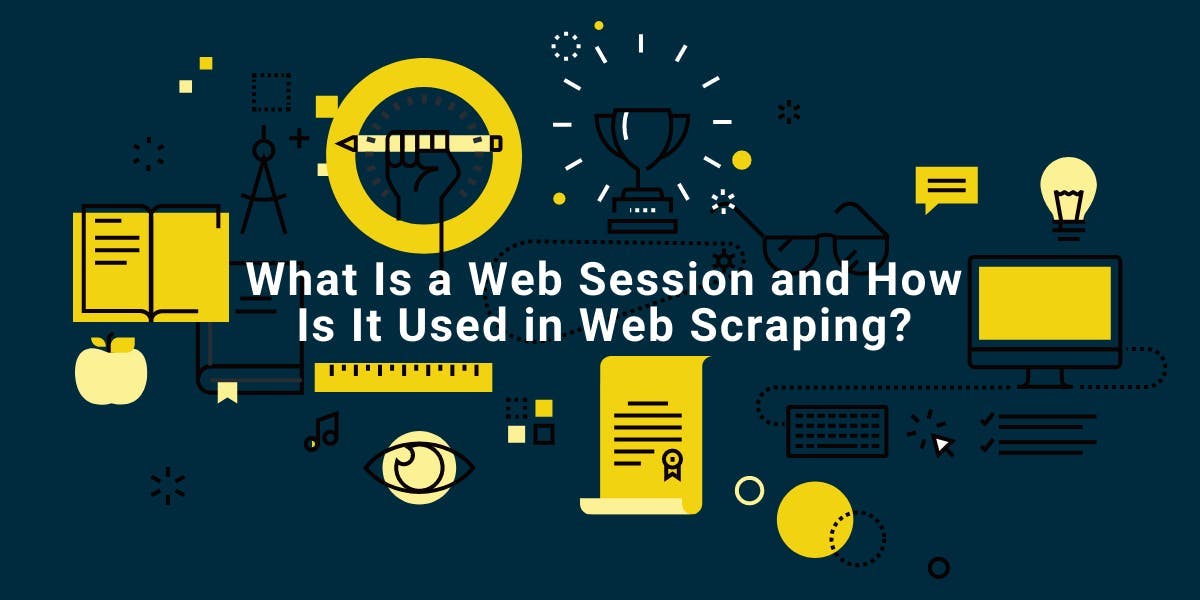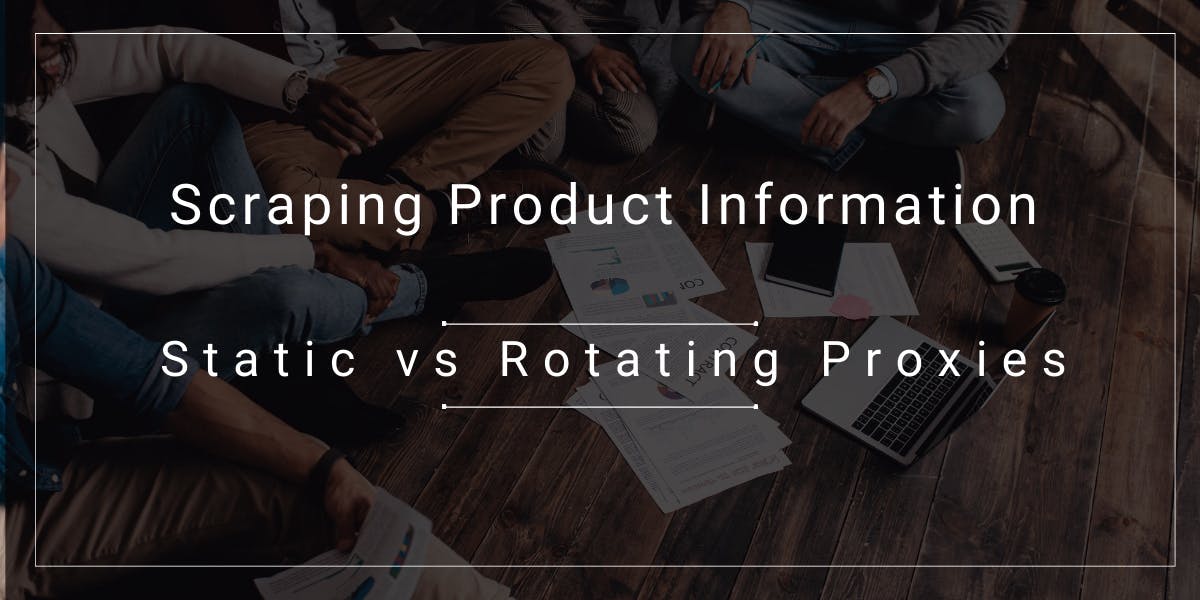What Is a Web Session and How Is It Used in Web Scraping?
Flipnode on May 11 2023

In order to perform tasks efficiently, many internet applications need to remember specific details about their users. Logging in or shopping online, for example, requires multiple sets of data to recognize and remember the user's behavior.
Web sessions are a common mechanism for maintaining this information. A session involves storing information on a server for the duration of the user's interaction with a website or web application. It encompasses the total time required to complete the desired actions before leaving the digital domain or turning off the device. A single session ensures a consistent experience and persists across multiple pages of the website. Each session is unique for every user, and any number of sessions can be used to cover the required volumes.
This article will provide a general overview of web sessions, their relationship with cookies, and their use in web scraping.
How do web sessions work?
Each session contains a unique data set that remains active throughout the user's interaction with a website. A sessionID, which is a distinct tag assigned to each user's browser when a new session begins, identifies the user's interactions with links on the website and triggers the sessionID to move to the server with the HTTP requests. This enables the server to save the IDs for future sessions, automatically signing in users with their remembered credentials.
During each subsequent visit, the exchange between the ID and the server occurs. The session details, such as viewing history, input data (including user credentials and selectable variables in drop-down lists), shopping cart contents, and more, are temporarily stored on the server and available to all pages on the visited site.
If there is no activity for an extended period, the session expires due to inactivity, resulting in a timeout and the deletion of all data. Any further interaction triggers a new session.
Sessions can be used as a substitute for cookies to secure data storage for browsers that don't support cookies. This article will provide a general overview of web sessions, their relationship to cookies, and their use in web scraping.
Web sessions vs cookies
Cookies and sessions are two common methods for storing information on the web. Cookies are small files stored on the user's device, which hold data until they expire or are removed manually. Sessions, on the other hand, keep temporary information on the server-side, allowing for quick access to persistent data. If you would like to learn more about cookies, you can read about what HTTP cookies are and their various uses.
The main differences between cookies and sessions
Cookies and sessions are both mechanisms used to store data on a client-server interaction. However, they differ in how and where the data is stored.
Cookies are small text files stored on the client's device by the web server. They are used to store user preferences, login information, shopping cart data, and other information related to the user's interaction with the website. Cookies can be persistent or temporary, and they expire after a set time or when the user manually deletes them.
Sessions, on the other hand, store user data on the server-side, and a unique identifier is assigned to the client's browser upon starting a session. The server then stores session data in a temporary directory for as long as the user is active on the website. The session data can include the user's credentials, shopping cart contents, input data, and more. Sessions are generally more secure than cookies because the data is stored on the server-side and not on the client's device.
In summary, cookies are stored on the client's device, while sessions are stored on the server-side. Cookies are used to store small amounts of data, while sessions can store larger amounts of data. Cookies can persist even after the user has left the website, while sessions are typically only active for the duration of the user's visit.
Sessions in web scraping
Proxies play a critical role in connecting sessions with web scraping. They enable you to create numerous concurrent sessions with single or multiple websites. By doing so, you can fill in various forms, ensuring sustained performance and scrape multiple data sets in parallel.
The primary objective of creating multiple sessions is to imitate organic traffic, which helps you avoid getting blocked. As a result, rotating sessions are typically associated with web scraping.
Rotating sessions
If you need to scrape multiple pages of data quickly, relying on a single IP address may lead to disruptions such as CAPTCHAs and bans. To avoid these issues and ensure a smoother process, rotating proxies can be utilized. This approach enables you to surpass the limited number of requests allowed to a website, rotating IPs until you extract all the required data. This enhanced flexibility enables you to evade IP and session tracking while avoiding bans.
Rotating sessions automatically change along with the IP address with each connection request. By entering a website with one IP address and changing it each time an action is taken, you can continuously rotate IPs. A pool of rotating proxies with a proxy rotator can switch between different IP addresses, changing the IP instantly with every new press on a link or page refresh.
Rotating sessions are ideal for general scraping tasks that involve long lists of product prices, with multiple rows and pages, as they can propel web scraping and crawling tasks without requiring logging into an account. If you want to avoid continuous requests being linked to a single session and device, rotating sessions are the best option.
However, rotation is not suitable for session-sensitive tasks like social media automation and sneaker copping, although some solutions offer great compromises. For extensive scraping sessions lasting up to five hours, rotating ISP proxies provide significantly improved stability, allowing you to appear as an organic user to meet specific stability demands.
If session time caps are an issue, distinct solutions that ensure permanency are available. Extended (sticky) sessions are suitable for websites that require session maintenance throughout the entire scraping cycle.
Sticky sessions
Session stickiness refers to the persistence of a session, where the proxy and IP address remain unchanged for a prolonged period. Extended sessions can last as long as the proxy provider allows, with the option to configure IP rotation intervals. Typically, extended sessions can last up to 30 minutes.
Rapid IP changes are often associated with automated bot activity, which can lead to suspicion from web services and result in session termination. With supervised accounts, a unique and exclusive IP address is assigned to each account to appear separate from the primary individual account. In reality, a single primary IP manages multiple extended sessions with different accounts using automation.
To manage accounts on the internet, a continuous session is required throughout the working cycle, which is why sticky sessions are maintained for a prolonged period before changing. Whether it's managing social media or e-commerce platforms, sticky IPs are ideal for account-dependent mediums.
Final thoughts
Sessions are essential components of the web that allow for monitoring and customization of user experience. Together with cookies, they provide critical functionality for users and service providers. Although sessions depend on cookies, both technologies have unique use cases and applications.
Rotating sessions are particularly useful for web scraping and automation, whereas sticky sessions are better suited for account management and extended working cycles.



